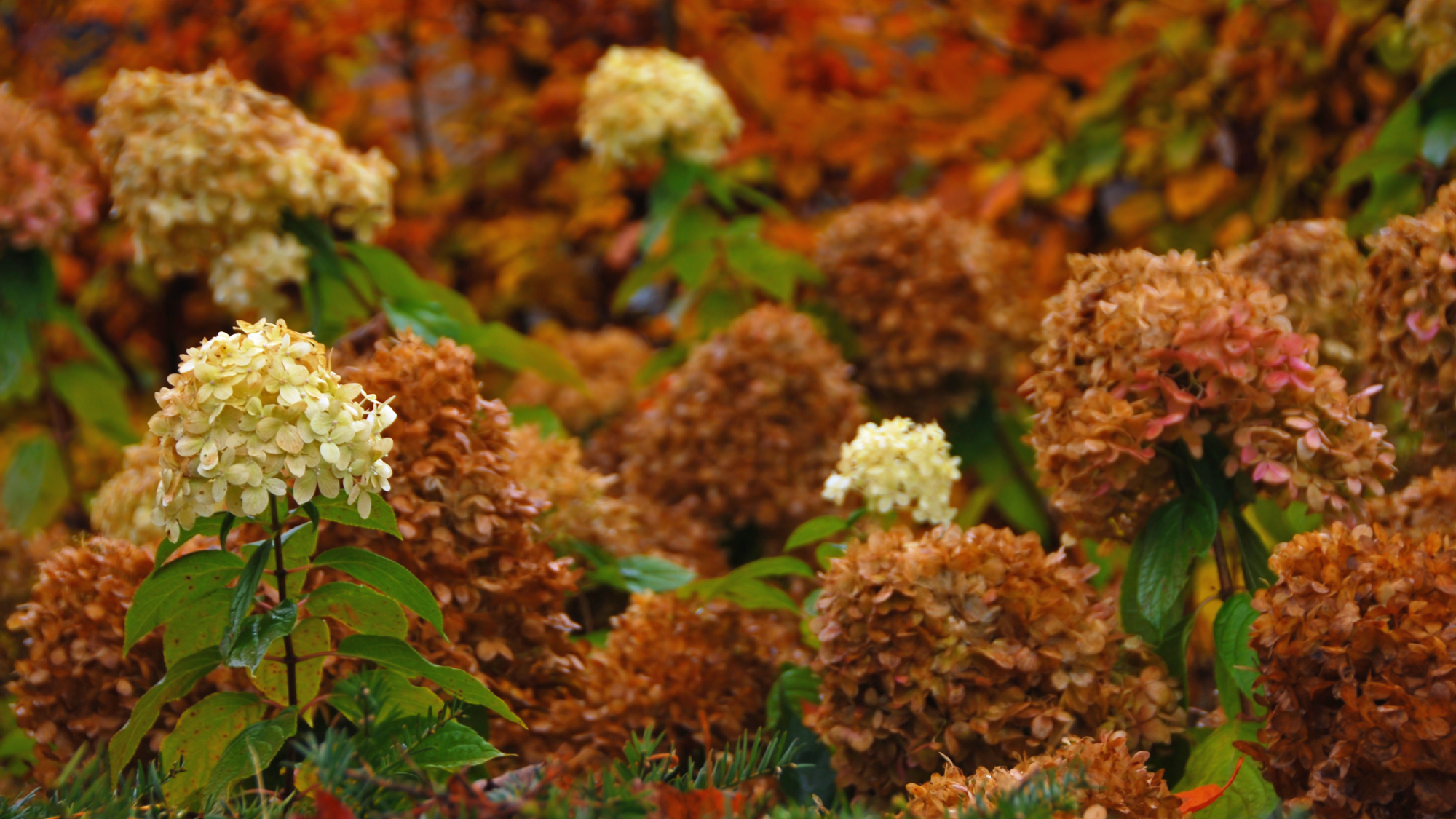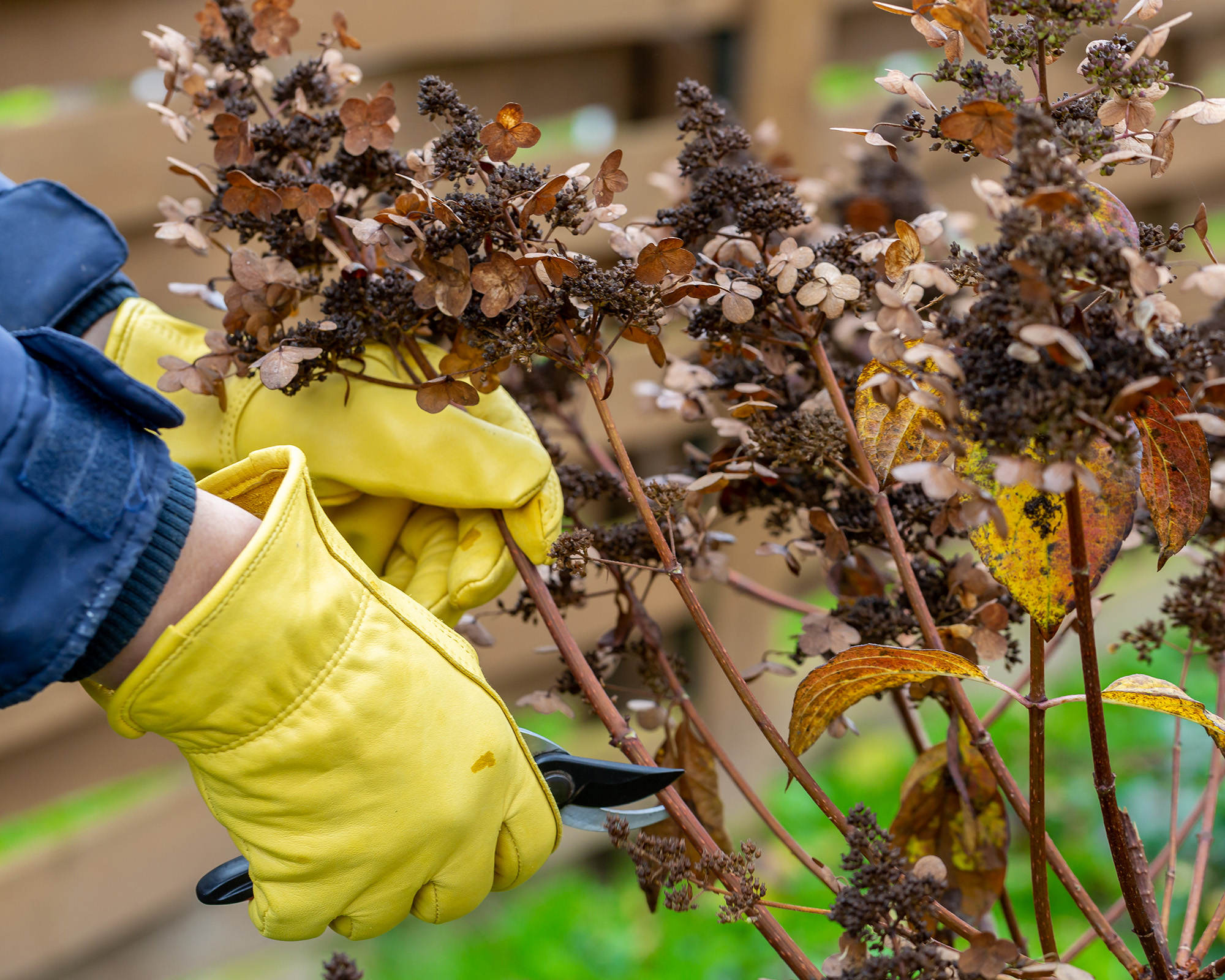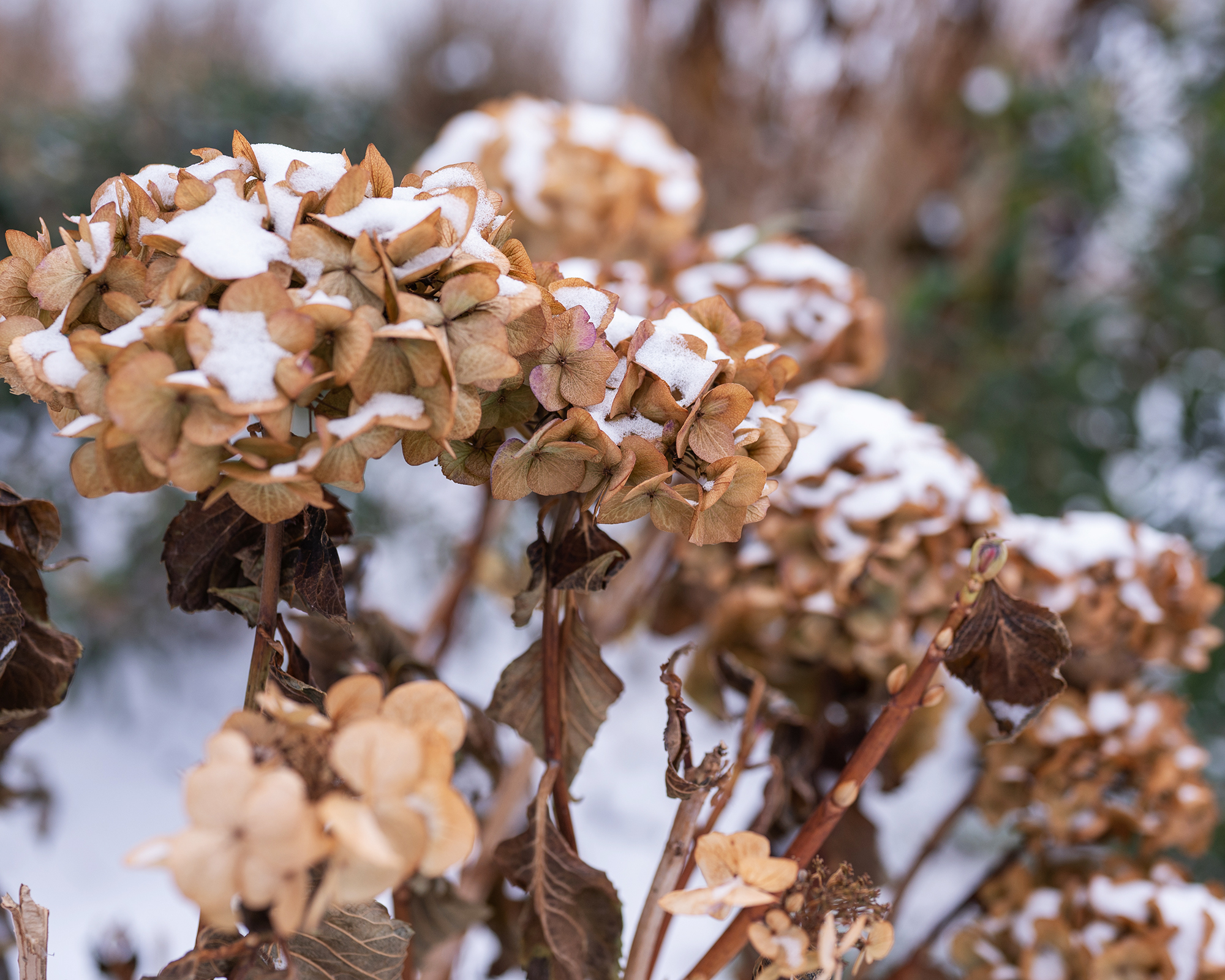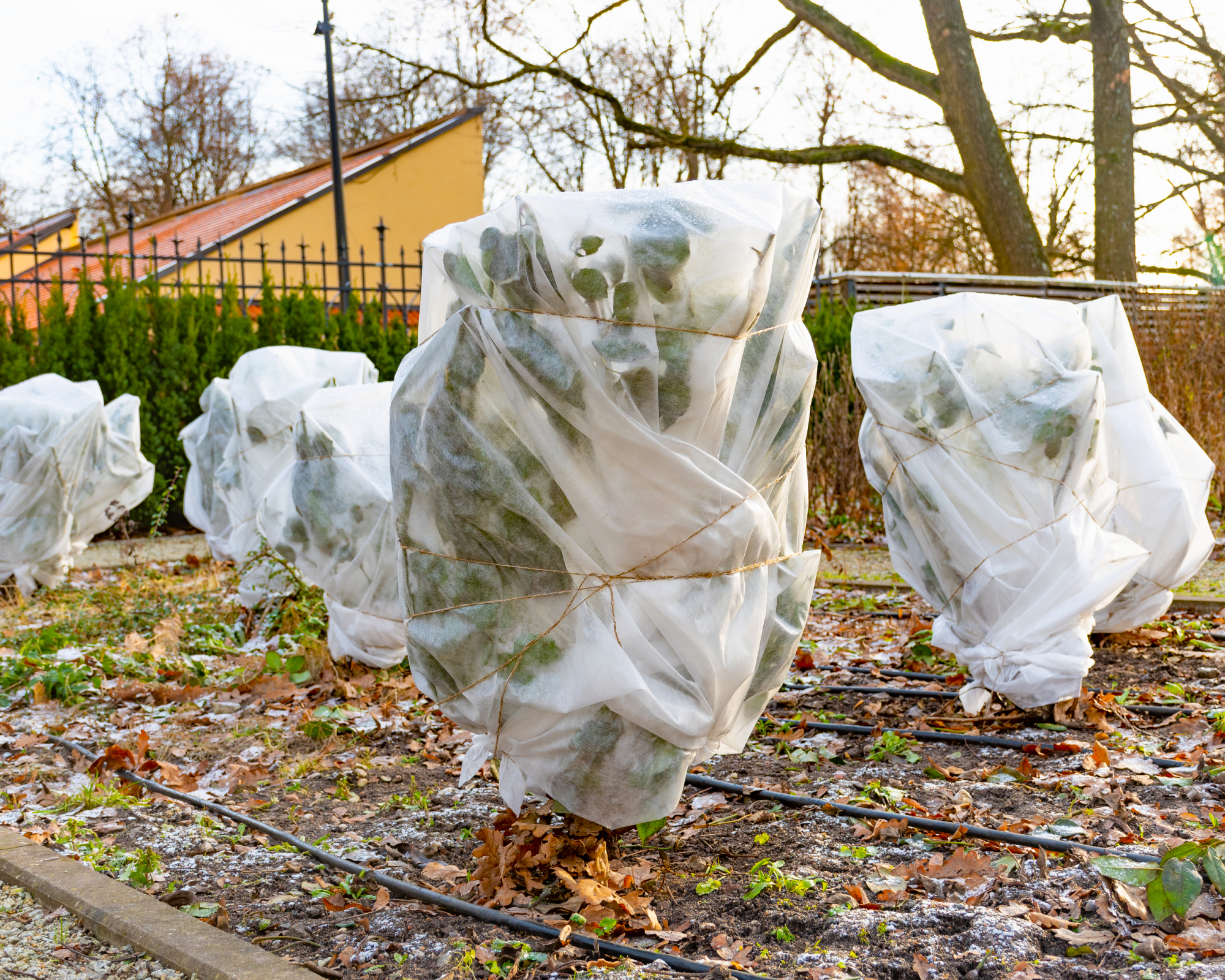These 2 Mistakes You Make in Fall Can Ruin Your Hydrangea Blooms Next Summer – Here's How to Avoid Them
Avoid these two cardinal hydrangea care sins this fall if you want beautiful blooms next summer.


Hydrangeas are typically easy to grow, which is great for home gardeners who want to add instant drama to their landscape. These gorgeous, flower-filled shrubs are the perfect foundation plant for almost any garden and their easy-going attitude makes them a crowd favorite.
However, despite this classic shrub’s low-maintenance nature, there are a few hydrangea care mistakes that can ruin plants. One of the biggest problems people face is their hydrangea not blooming. There are several reasons why this may occur, but two of the most common causes start in fall.
I’ll tell you what two fall hydrangea care mistakes many gardeners make that impact blooms next summer—and how to avoid them. A lush shrub filled with flowers starts now, so let’s dig in.
1. Improper Pruning

Improper pruning is one of the cardinal hydrangea care sins. This is the most common reason hydrangea bushes don’t bloom, but thankfully it’s an easy fix. The first step in avoiding this mistake is understanding what kind of hydrangea you have.
Different varieties of hydrangeas have different pruning needs. Some shrubs, like mophead hydrangeas and oakleaf hydrangeas, bloom on old wood. That means they set buds for next year’s blooms the preceding fall. So if you prune hydrangeas in fall, you risk cutting off all of next year’s flowers.
Instead of cutting back your mophead, oakleaf, and lacecap hydrangeas in fall, give them a light trim immediately after they finish blooming but before they set buds. The exact timing may vary depending on your USDA growing zone, but typically the best time to prune old wood bloomers is late summer or early fall. By late October and November, your window is pretty much closed.
Panicle hydrangeas and smooth hydrangeas both bloom on new wood, so pruning them in fall won’t ruin your blooms next year. But it’s still not a great idea either. The best time to prune hydrangeas like these is in late winter or early spring before they begin leafing out and setting buds. Pruning in fall can make shrubs vulnerable to winter kill, so do them a favor and put your pruners away for winter.
Sign up for the Gardening Know How newsletter today and receive a free copy of our e-book "How to Grow Delicious Tomatoes".
Another major mistake that applies to more than just hydrangeas is using poor pruning tools. Always use sharp pruners, like these Fiskars garden shears from Amazon, to make precise cuts. Using dull pruners can damage plants and leave open, jagged wounds where disease can easily get in.
It’s also vital to clean your pruners between plants to avoid spreading common hydrangea diseases from one shrub to another. To make cleaning easy, I just shove a couple disinfecting wipes, like these ones from Amazon, into my pocket before I head out to prune. Then I simply swipe my pruner blades before moving onto the next plant.
2. Not Providing Winter Protection

The other big fall care mistake many gardeners make is not protecting hydrangeas in winter. However, not all hydrangeas need winter protection.
If you grow the right hydrangea for your zone, then winter kill probably won’t be a problem for you. But with more unpredictable winter weather in recent years, growing zones are changing or at least not as reliable as they used to be.
If you live in USDA growing zones 2-7, or if winter temperatures are expected to dip below 0° F (-17° C), it’s a good idea to provide your more vulnerable hydrangeas with some extra protection.
Most panicle and smooth hydrangeas will be fine with this level of cold. But bigleaf hydrangeas, which include both mophead and lacecap varieties, are most at risk for cold damage. I know from personal experience moving to a new growing zone and trying to grow mopheads in Michigan, that shrubs won’t bloom if late winter freezes destroy the flower buds they set in fall. That’s where winter protection comes in.
First, keep watering hydrangeas as usual until the ground freezes. It’s also beneficial to mulch your hydrangeas to help hold in some of that moisture and add much-needed insulation from cold winter temperatures. Use a natural wood mulch, like this one from Amazon, or another organic material, like compost, that will also help improve soil.

Next, gently wrap your shrubs in frost blankets or burlap, which you can find cheap on Amazon, to prevent cold from killing off buds and branches. Use twine, which you can also pick up on Amazon, to secure the burlap. Carefully wrap the twine around your covered shrubs and tie it off to create a warm and cozy coat for your hydrangeas this winter.
When temperatures begin to warm in spring and there’s no more danger of extreme cold, remove the wrapping, fold it up, and save it to use again next year. Then sit back and enjoy your beautiful hydrangea blooms.

Laura Walters is a Content Editor who joined Gardening Know How in 2021. With a BFA in Electronic Media from the University of Cincinnati, a certificate in Writing for Television from UCLA, and a background in documentary filmmaking and local news, Laura loves providing gardeners with all the know how they need to succeed, in an easy and entertaining format. Laura lives in Southwest Ohio, where she's been gardening for ten years, and she spends her summers on a lake in Northern Michigan. It’s hard to leave her perennial garden at home, but she has a rustic (aka overcrowded) vegetable patch on a piece of land up north. She never thought when she was growing vegetables in her college dorm room, that one day she would get paid to read and write about her favorite hobby.